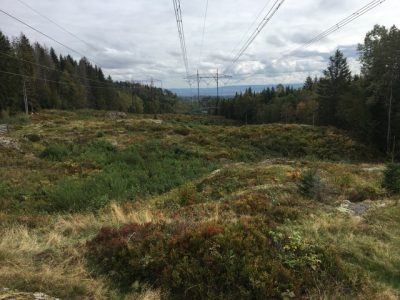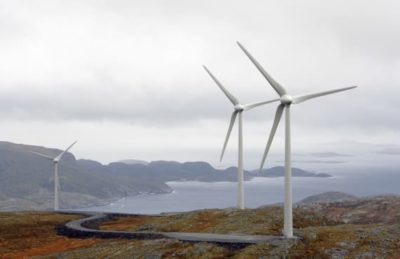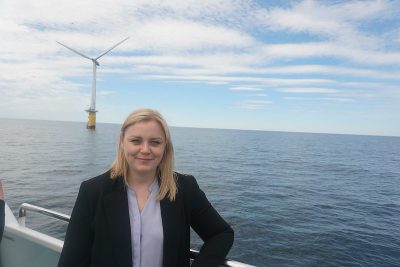Recently soaring electricity rates in Norway and high gasoline prices at the pump are just a taste of what may lay ahead, warn various oil industry players. They have their own vested interests and can profit on such booms, but several meeting in Oslo last week think consumers need to brace for a new energy crisis.

They issued more than a few warnings at what used to be called an “Oil and Offshore” conference organized by Oslo-based Pareto Securities. Now it’s called an “energy conference,” notes newspaper Dagens Næringsliv (DN), at a time when there doesn’t seem to be enough energy to meet market demands.
Electricity rates have hit record highs in Norway, a notoriously expensive country where electricity used to be one of the few things that was relatively cheap. Once-bountiful waterfalls and dams that fueled hydro-electric power are now running low after an unusually dry summer. The sheer lack of rain has left water-levels in reservoirs as much as 10 meters below normal for this time of year.
At the same time, it hasn’t been as windy as normal, apart from a few isolated (and destructive) summer storms. That’s left large turbines idle and reduced the amount of wind energy being produced.
The price of gas and even unpopular coal has also increased, pushing electricity rates elsewhere in Europe to high levels as well on the basis of little supply and high demand. Norway sells and sends electricity to Europe but officials also need to make sure Norwegians will have enough to get through the winter, so can’t relieve pressure on the overall market too much.
Oil prices, meanwhile, have also risen in recent weeks, from less than USD 20 a barrel in the spring of last year to around USD 75 now. Carbon taxes are set to shoot up as part of looming climate measures, prompting some analysts to predict that Norway’s North Sea Brent crude will soon command as much as USD 85-90 a barrel.
Alanysts also blame “underinvestment” in the oil industry in recent years. Oil companies hurt by the oil price collapse in 2014 have been more cautious about launching new projects, and few oil projects are popular at a time when climate change is becoming more visible by the month.

DN reported how Øyvind Eriksen, chief executive of industrial firm Aker in Oslo, opened last week’s conference by stressing a recent lack of investment in both oil and gas. He worries that will also push up lots of other prices up, too, and threaten support for a so-called “green shift” at a time when massive investment is needed in renewable energy.
“I’m personally concerned about energy prices moving forward,” Eriksen said, even though Aker’s own oil business would profit on that.
DN also reported how Tor Svelland, who most recently worked for shipping tycoon John Fredriksen, has gone back to running his hedge fund. He thinks all the under-investment in traditional energy poses a lack of supply that’s even worse than Eriksen fears.
“We’re heading right into an energy crisis,” Svelland told DN. “It’s that serious.” It also poses investment opportunities, but he doesn’t think alternative energy sources will generate enough to offset loss of energy production in the gas and oil sectors. “There’s no quick fix,” he claimed, “there’s not enough renewable (energy) coming,” especially as colder weather sets in.
Eriksen, Svelland and other in the oil industry all claim they believe in and support the “green shift,” but warn it’s not coming quickly enough to meet energy demand. Svelland warns against all the calls to shut down oil fields in the coming years, as does Eriksen, and they also want to retain sources of investment and financing. Some worry that such sources will dry up, while others predict an oil investment boom before last year’s Corona-related tax incentives for oil investment expire.

Morten Astrup of Storm Capital Management, which manages more than NOK 2.5 billion and places a lot of it in oil- and gas-related ventures, also still sees plenty of opportunity in “dirty” businesses like oil and gas. He claims there’s not much more room for huge turbines to generate wind power along the Germany coast, for example. Astrup, brother of the outgoing Norwegian government minister Nicolai Astrup of the Conservatives, thinks oil activity in the North Sea may last the longest of all. “We think it will be most profitable to produce the cleanest oil, and then the North Sea oil will win. And then new forms of energy (including wind power) will come out of that.”
Eriksen seized the opportunity to say he hopes Norway’s new left-center government won’t start phasing out oil production on Norwegian oil fields. “On the contrary, it’s important to build on the competence and technology we have within Norwegian oil and gas as a springboard to new, greener industries,” Eriksen said. He doesn’t need to worry much, since the traditional pro-oil Labour Party’s leader Jonas Gahr Støre is set to become Norway’s prime minister. Støre has already declared that Labour won’t support an end to oil exploration, predicting that most of it will occur in areas where there already is oil activity and installations.
Norway’s outgoing Oil & Energy Minister Tina Bru reports ongoing interest in Norwegian oil fields, also for more oil exploration. She’s received 31 new applications for exploration licenses on the Norwegian continental shelf, much to the disappointment of the climate-oriented parties that want to halt ongoing exploration. Bru counters that exploration “is important for maintaining offshore activity and good resource management.”

A recent survey conducted by research firm Ipsos for newspaper Dagbladet indicates that 31 percent of Norwegians questioned want to let the market determine how oil and gas can be eventually be phased out. Almost as many, 30 percent, think Norway should continue to produce oil and gas but stop exploring for new sources of oil. Another 14 percent think Norway should halt all oil exploration and production by 2050, in order to meet climate goals, while 11 percent think exploration and production should end by 2030.
The survey provided a big boost to pro-oil politicians like those in the Progress Party, since only 25 percent of Norwegians want to halt exploration and production by 2050. “That shows massive support to those of us who want to further develop the oil and gas industry, and not phase it out,” Progress leader Sylvi Listhaug told news bureau NTB. “They see the importance of the oil business to secure pensions and Norwegian welfare for future generations.”
The anti-oil Greens Party viewed the survey results differently, and were just as glad that 25 percent of Norwegians want to phase out oil and gas. “The UN chief has asked us to stop searching for more fossil energy,” Lan Marie Berg, a newly elected Member of Parliament for the Greens told NTB. “That makes an impression on folks, who put the environment, climate and their children’s future first, and secure (other) good jobs for the future.”
The future of Norway’s oil and gas industry ranks highst among the major issues, and challenges, facing the new government when it takes power next month. Many think it will be business as usual for many more years, but energy prices will rise as efforts continue to find new sources of energy that won’t generate the same amount of emissions.
newsinenglish.no/Nina Berglund

